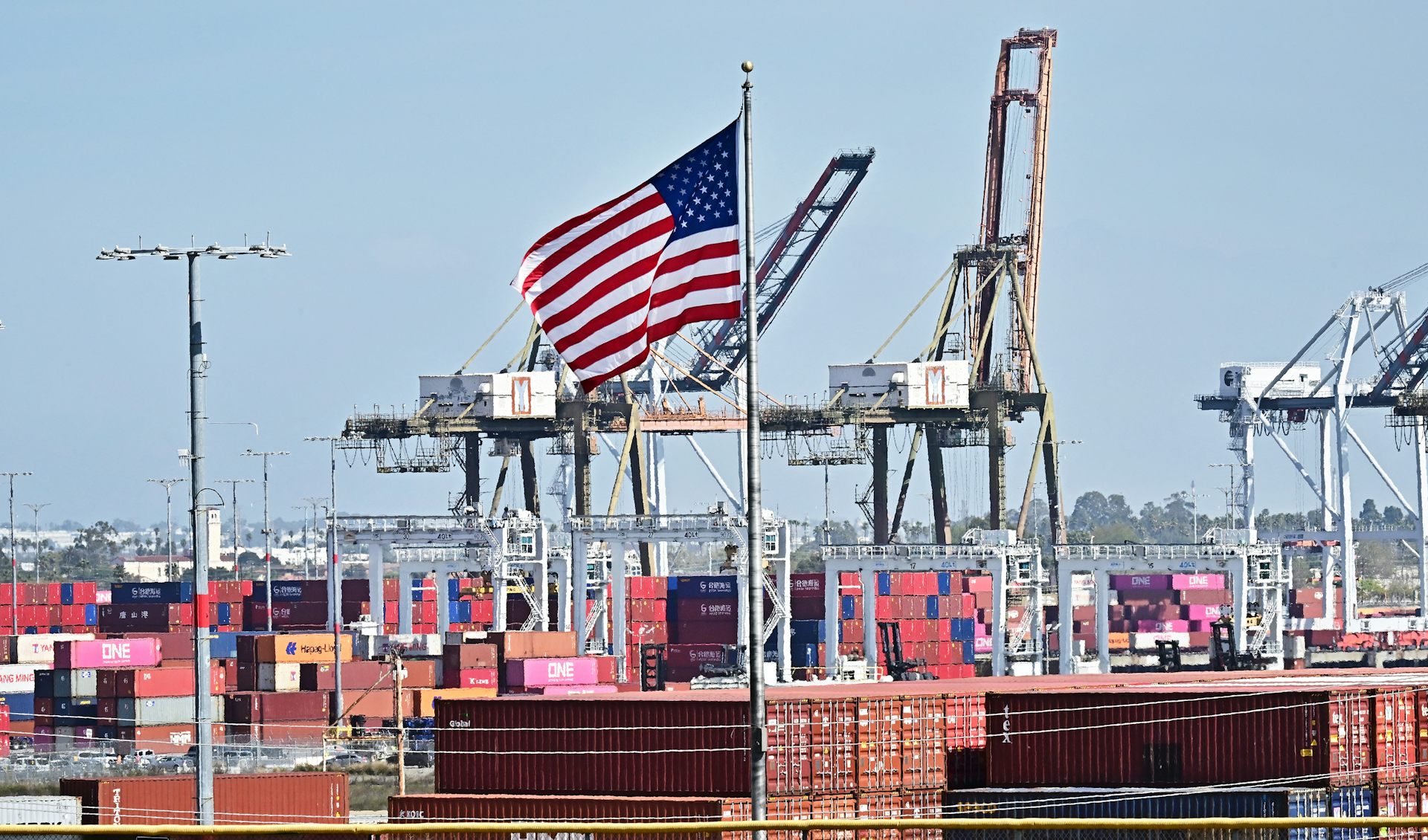Here’s how we figured the number of guns illegally trafficked from the US across the border to Mexic
More than 135,000 weapons were illegally trafficked across the border to Mexico in 2022. Gun laws help stem the tide.
Since 2008, the U.S. has spent over US$3 billion to help stabilize Mexico and stem its surge in extreme violence. The U.S. gun industry and interest group lobbyists have undercut these efforts by advocating for lax regulation and enforcement. This has created mayhem south of the border, and its effects have ricocheted to the U.S., boosting illegal drug trade and organized crime.
Meanwhile, the federal block on firearm trace data sharing established by the 2003 Tiahrt Amendments makes it difficult to track the illegal U.S.-Mexico firearms trade in order to study these effects.
We are a professor of economic development and an investigative journalist, and we have spent a year sifting through documents to follow the flow of illicit weapons trafficked from the U.S. to Mexico and quantify what this flow has wrought.
Here’s how we did it.
Pulling together the data
We gathered records from many sources to create a database of firearms that were sold by licensed U.S. firearm dealers, then trafficked to Mexico. These businesses are licensed by the U.S. government to sell or manufacture and sell firearms and ammunition in the U.S., and they include independent gun shops, chain stores and pawnshops.
We gathered two sets of data that were obtained through an information request to Mexico’s Secretaría de la Defensa Nacional, known as SEDENA, and curated by Stop U.S. Arms to Mexico:
Nearly 133,000 firearms seized by Mexican authorities from January 2010 to March 1, 2023.
Nearly 5,700 firearms purchased by Mexican police from 2003-2019.
We combined firearms trace data records from two other sources:
Information leaked from the Mexican government by the hacktivist group Guacamaya in 2022 that included gun trace data from November 2018 to December 2020 from the U.S. Bureau of Alcohol, Tobacco, Firearms and Explosives’ National Center for Analysis, Planning and Intelligence. This dataset contains information about more than 24,000 firearms; 15,000 of them were purchased in the U.S.
A dataset we generated from 100 U.S. court cases that involved small arms trafficking from the U.S. to Mexico and contains information on more than 4,200 firearms. It includes many contextual details not found in the leaked data. For instance, roughly 1,900 instances include a date of purchase.
Of the 28,000 records in the combined trace records, nearly 13,000 were linked to specific licensed firearm dealer addresses in the U.S. In most years, the ATF was unable to determine the final purchaser in about half of its traces of U.S.-sourced firearms recovered in Mexico. We removed records that appeared to be dead ends tied to large manufacturer addresses and were left with 9,014 records that we could confidently say were fully traced back to specific firearm sellers.
We also used a dataset of firearms violations originally acquired from the ATF by the nonprofit advocacy group Brady: United Against Gun Violence through a Freedom of Information Act request for its Gun Store Transparency Project. The 4,000 code violations of federal firearm laws between 2015 and 2018 are from ATF inspection reports and include warning letters, warning conferences and license revocation recommendations.
Using these four datasets, a previous estimate and two other studies, we modeled the number of guns trafficked across the border into Mexico annually. This allowed us to understand the characteristics of firearm trafficking to Mexico from multiple angles.
We had two main objectives:
To estimate how many guns were trafficked annually.
To determine what effect regulation measures might have on the trafficking flow.
Weapons flow
We started our analysis with a weapons count using what is known as a capture-recapture method. This type of count is often used to estimate the number of animals in the wild, where it is impossible to do a complete tally: A sample of the population is captured, tagged and released, then a second sample is taken to see how many tagged individuals are recaptured.
We applied this method to the SEDENA and leaked ATF data. The SEDENA dataset contains weapons seized by the Mexican army, while the leaked ATF dataset contains guns seized by Mexican agencies. For an ideal capture-recapture comparison, the leaked data would include all SEDENA records, but only 26.5% overlap. Although imperfect, this allowed us to develop econometric equations to estimate the annual circulation of illicit firearms in Mexico.
We combined this with estimates derived from five other sources:
The firearm seizures by Mexican authorities from January 2010 to March 1, 2023 originally acquired from Stop US Arms to Mexico.
Total U.S. gun production from 1993 to 2022.
An estimate of 253,000 firearms trafficked per year from 2010-2012 from the University of San Diego/Igarapé Institute report The Way of the Gun: Estimating Firearms Traffic Across the U.S.-Mexico Border, which one of us co-authored.
An estimate of 730,000 firearms trafficked per year from the Brookings Institution 2008 study Partnership for the Americas Commission.
The U.S. Government Accountability Office 2021 report Firearms Trafficking: U.S. Efforts to Disrupt Gun Smuggling into Mexico Would Benefit from Additional Data and Analysis, which references a Mexican government estimate of 200,000 firearms trafficked per year.
We used a method analogous to a political polling average, which also combines multiple sources, to model the likely trafficking rate. Our model estimated that between 72,819 and 258,101 firearms were sold in the U.S. and trafficked to Mexico in 2022.
This led us to a middle-range estimate of 135,000 firearms trafficked from the U.S. to Mexico in 2022.
To get an idea of the effects this flow of weapons has on the people living in Mexico, we compared our trafficking estimate with data on homicides in Mexico from the U.N. Office of Drugs and Crime, via the World Bank, for 1990-2022.
We refined our model by looking at the difference in that relationship during the 1994-2004 U.S. federal assault weapons ban. This showed that a 1% increase in trafficking leads to a 0.48% rise in homicide rates. More than two-thirds of firearms recovered in Mexico and traced to a purchaser originate from the United States, according to ATF figures. Our model showed that only around 6% of these weapons were legally imported.
We hypothesized that high numbers of illegal seizures might lead police to buy more firearms, and heavily armed police might push criminals to acquire more weapons, creating an arms race. Our test results supported this theory: We found that an average 10% increase in police firearm orders from 2006-2018 led to a 1.4% rise, on average, in illegal arms seizures the following year. And, conversely, a 10% rise in illegal arms seizures in each of those years corresponded to an 18.5% increase in police firearm orders the next year. The economic climate and non-firearm crime rates might also be related to police firearm purchases, but we did not control for these factors.
Regulation and enforcement
We also used the court case data to track the dates guns were purchased in the U.S. and the dates they were recovered, often en route to or in Mexico. This allowed us to verify the leaked ATF data. We excluded weapons purchased or sold for trafficking to Mexico solely through the influence of undercover law enforcement officers.
Around 2,900 guns in the court case data had a serial number, and 19 of them matched with the leaked ATF gun trace data. Details in the court records, such as the location of recovery in Mexico or the dealer where the guns were purchased, were identical to the details in the leaked data. The 19 matches were from nine court cases across five states, and the court cases were generated independently from the leaked data. This confirmed the leaked data’s authenticity.
We also used the trace data to test eight firearm laws that require reporting at the point of sale, to test what effect these laws might have on gun trafficking to Mexico.
We calculated the probability of a gun staying on the illicit market. We controlled for possible spillover effects such as gun sales suppression in one state pushing buyers to neighboring states. One of our calculations used distances between states to measure the influence of gun sales and laws across states.
We found:
Most firearms laws reduce the amount of time guns spend on the illicit market.
Purge laws, which stipulate that the gun shop owner or the state retain purchase or background check records, result in a 126% to 257% greater likelihood of an illicit gun being recovered on any given day.
More gun laws in surrounding states increases the likelihood by about 1.9% that guns sold in a state are recovered in that state.
Our findings align with previous studies showing that stronger gun purchase laws in the U.S. reduce the number of firearms that end up in illicit markets at national and state levels.
We also hypothesized that some of the federal firearms licensees associated with weapons records in the data would already be known to law enforcement and that we might be able to gauge the impact of enforcement actions.
To test this, we used the Brady dataset of ATF firearms dealer code violations from 2014-2018 to match traced firearms to licensees.
We analyzed the data using three different approaches, and all three showed that more citations for violation of firearms laws lead to fewer illicit guns.
In addition, we found that from 2014-2018:
ATF citations reduced the number of guns sold to traffickers by 20% to 44%.
Licensees who received enforcement actions – warning letters, warning conferences or license-revocation warnings – had contributed between 5% and 21% more guns to U.S.-Mexico traffic than licensees with no regulatory action.
The ATF issued enforcement actions to about 12% of firearm licensees each year.
Back in the USA
There were over 75,000 federally licensed firearms dealers regulated by the ATF in the United States in 2024, including independent stores, chain stores, pawnbrokers and manufacturers.
Many traffickers and firearm licensees in the court and ATF trace datasets are linked to crime in the U.S. We matched nearly 300 of the illicit weapons in these datasets to licensees in the ATF’s Demand Letter 2 program, which tracks licensees who have sold 25 or more guns within a year that were recovered from U.S. crime scenes within three years of being sold.
For the two years of data we obtained, about one-fifth of the businesses in the Demand program list in 2022 and 2023 were matched to Mexican crime guns. The overlap suggests that the effects we found for Mexican crime guns, including more compliance checks leading to fewer illicit guns, apply to the illicit U.S. market as well.
Read the full investigation: Mexican drug cartels use hundreds of thousands of guns bought from licensed US gun shops – fueling violence in Mexico, drugs in the US and migration at the border
Read These Next
As a former federal judge, I’m concerned by a year of challenges to the US justice system
A university president who’s a former federal judge looks at the rule of law and the Trump administration’s…
AI’s errors may be impossible to eliminate – what that means for its use in health care
Many health symptoms can be caused by multiple illnesses – if AI can’t tell the difference between…
Time banks could ease the burden of elder care and promote connection
A diverse team of researchers, concerned that the global elder care crisis cannot be addressed by the…





